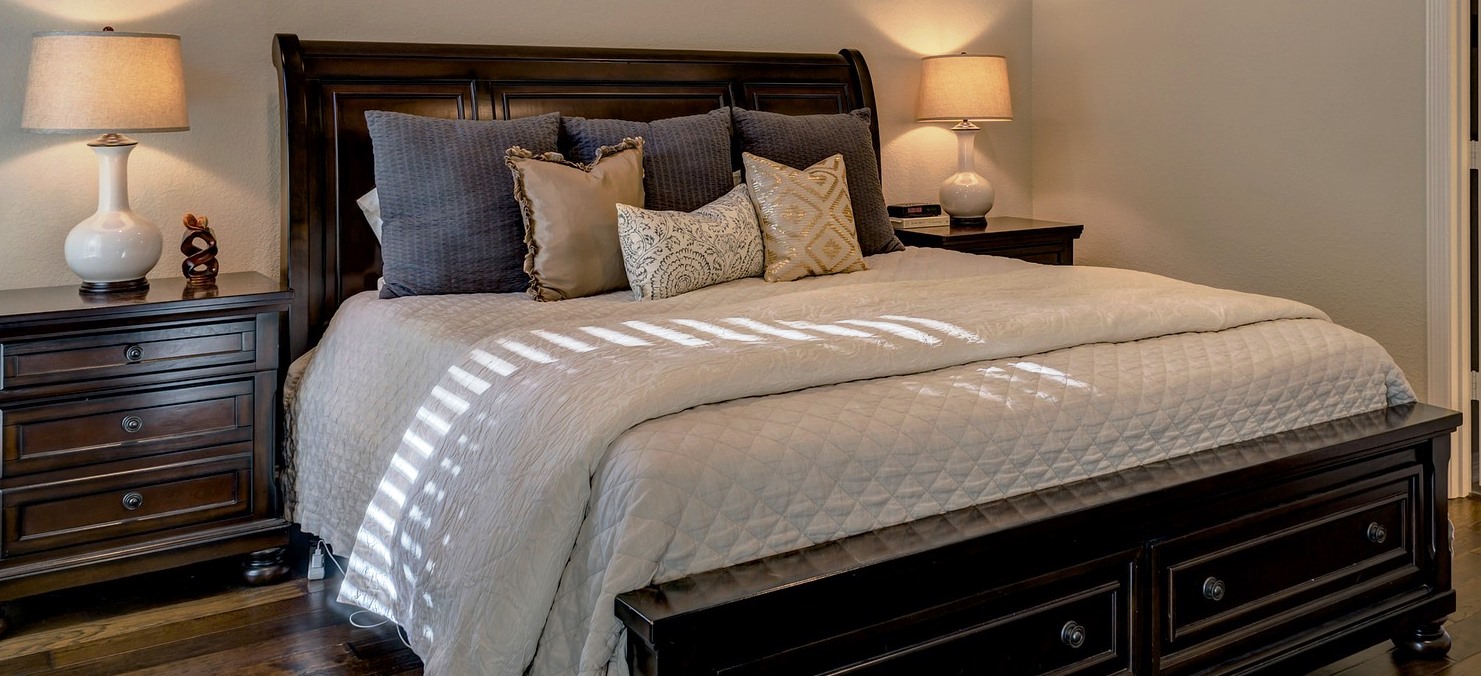Have you ever gone to buy new sheets for your bed, and found yourself staring at pack after pack, totally confused by all the different types of materials, thread counts, descriptive words and more? And that’s before you even start thinking about colours or designs.
I know I have. So it’s time to demystify the process, in the hope that in future, buying manchester won’t give you the… well, sheets! I’ve already tackled thread count in an earlier blog post, but there’s plenty more to think about.

Which Type of Fabric?
100% cotton is a perennial favourite, with a soft feel and good durability. You can also buy “premium” cotton, generally labelled Egyptian or Pima, which are made from long-staple cottons and have a softer feel to them. These are the ONLY types of sheets where thread count can make a difference. Read the earlier linked article to find out why!
Polyester sheets are generally stronger and more wrinkle-resistant than cotton, and also less expensive. So they’re very popular too. But they tend to fall short in the “luxury feel” criteria, when compared to natural fibres.
Cotton/polyester blend is also common, and can be a good compromise to get some of the natural feel of cotton along with the strength, lack of wrinkles and cheaper price tag of polyester. Given the huge range of possible percentage blends, though, you need to judge each set of sheets individually.
Flannel sheets are generally made with cotton, but rather than thread count, they’re measured by weight. They’re generally denser and warmer, and depending on the manufacturing process, often feel slightly fluffy, make them very comfy to slide between on a cold winter’s night.
Jersey knit is a more recent option made with cotton, but are made in quite a different way to traditional sheets. The finished product is basically the same as t-shirt fabric, so getting into bed is a little like putting on a very big, favourite t-shirt.

Linen is hugely popular in summer, because it’s very breathable and tends to look very relaxed. But if you want a crisp, freshly-ironed look, it may not be for you. Anyone who’s worn linen clothing will know how fast it crumples!
Silk or satin are often considered the height of naughtiness, but there’s a big difference. Silk is a natural fibre, and has advantages such as being hypoallergenic, naturally temperature regulating, resistant to mould and dust mites and non-irritating. Satin, while looking and feeling similar, is an artificial fibre, and so doesn’t possess most of the same qualities. And with both of them your pillows do tend to slide around a lot!
Microfibre is another relative newcomer which is proving very popular. Made from various blends of polyester, nylon and wood pulp, they’re super soft, rarely shrink and resist wrinkling.
Bamboo is another recent addition to the world of sheets. Similar to silk, they’re a natural fibre and are also hypoallergenic and thermo-regulating. Add to that the fact they’re a highly sustainable material, so they’re kind on the planet too.
Hopefully you’re now a lot more familiar with the pros and cons of all the various types of materials sheets are made from.

As a final point, many sheets are also labelled percale or sateen. These terms refer to the way the fibres are woven together. Percale sheets use a basic, grid-style weave to give a light and crisp feel, and sateen weaves yarns in one direction over multiple yarns in the other, giving a softer, smoother finish, similar to that of Egyptian cottons.
Have fun shopping for new sheets!

